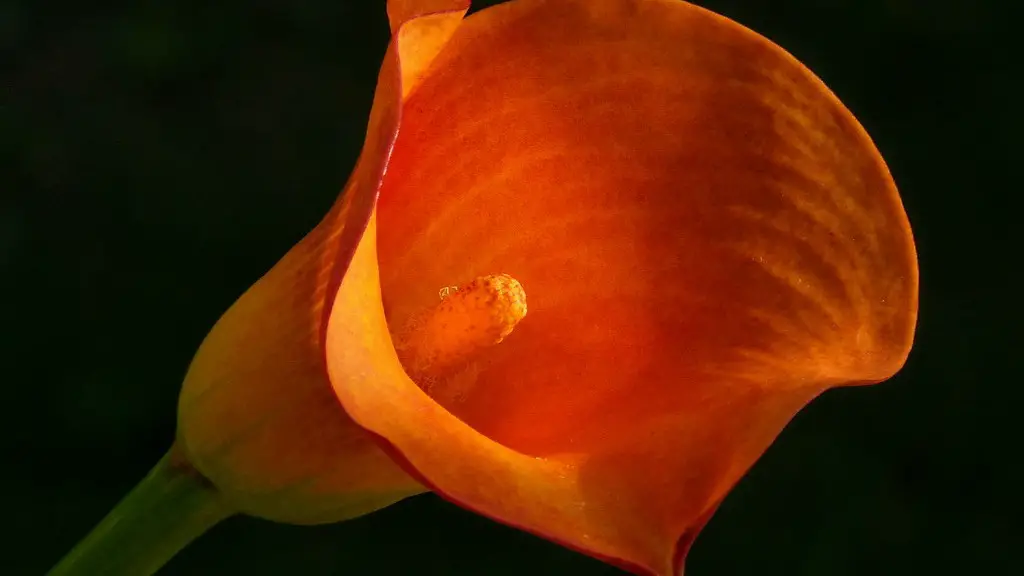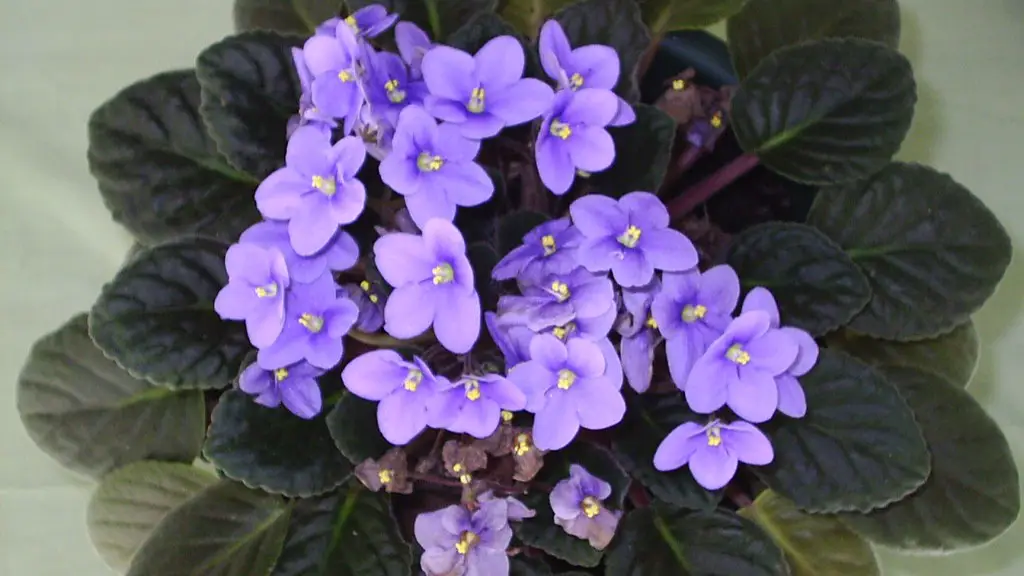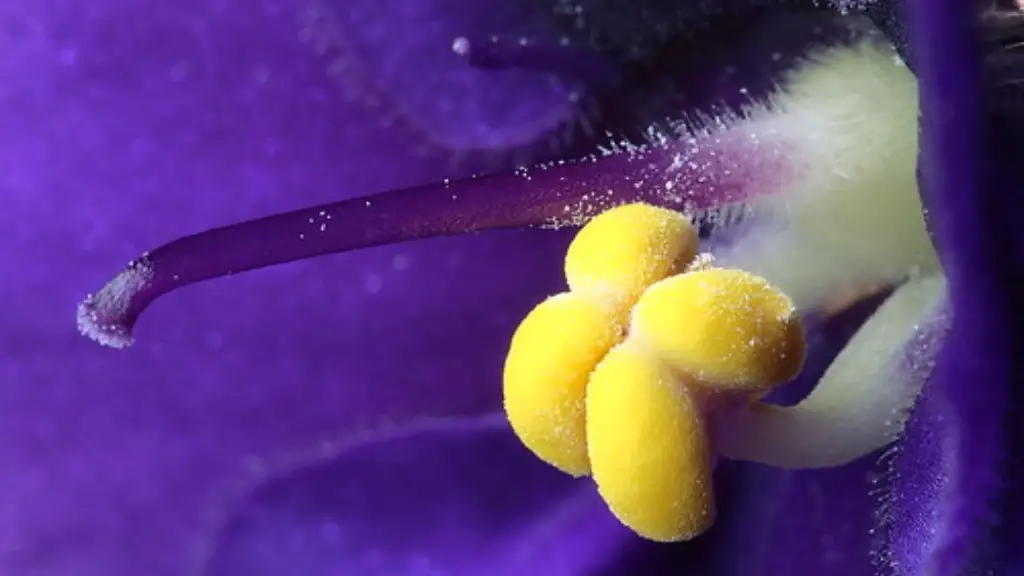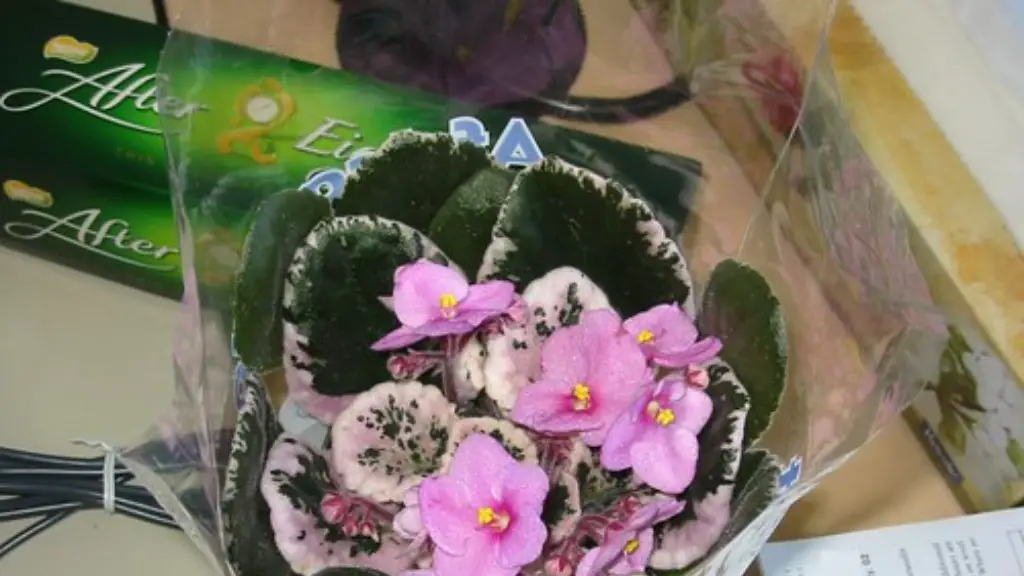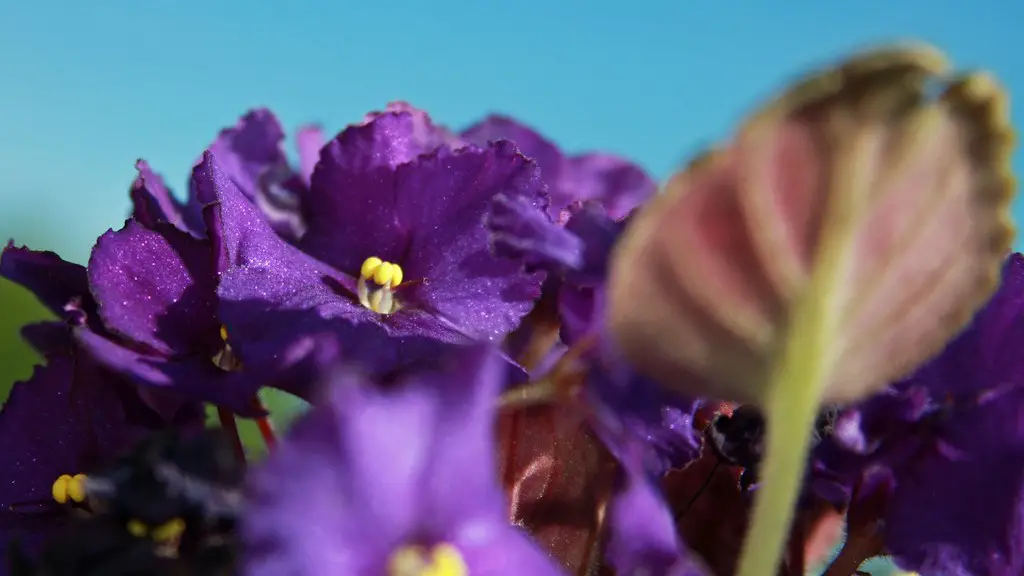African violets are one of the most popular houseplants because they are relatively easy to care for and bloom regularly. African violets are native to Tanzania and parts of Kenya. African violets need plenty of light to bloom, but too much direct sunlight can scorch their leaves. African violets also need to be watered regularly, but their roots are delicate and easily damaged by overwatering. To encourage blooming, African violets should be fertilized every two weeks with a product specifically designed for African violets.
There are a few things that you can do to help encourage your African violets to bloom. First, make sure that you are giving them enough light. African violets need at least 12 hours of light each day in order to bloom. Second, water your African violets regularly, but be sure not to overwater them. Allowing the soil to dry out between waterings will also help encourage blooming. Finally, make sure that you are fertilizing your African violets regularly. Use a fertilizer that is high in phosphorus, as this will help encourage blooming.
How do you get African violets to flower?
If you want to grow healthy and vibrant African violets, you should provide them with bright, indirect sunlight. Too little sunlight will cause the plants to stretch for the light and produce few or no flowers; too much sun can burn the leaves. An east-facing window is ideal, especially with a sheer curtain to block the sun’s harshest rays. African violets also need eight hours of darkness every night in order to thrive.
African violets are a beautiful addition to any home, and with the right care, they can bloom nearly year-round. Each bloom lasts for about 2-3 weeks, so you can enjoy their beauty for months on end. To keep your violets blooming their best, provide them with bright, indirect light and keep the soil moist but not soggy. With a little love and attention, your African violets will bring you joy for many years to come.
Does Epsom salt help African violets bloom
Epsom salt is a type of salt that is rich in magnesium and sulfur. These two minerals are essential for the production of beautiful blooms and healthy foliage. To use, mix one and a half teaspoons of Epsom salt in a quart of tepid water and swirl to dissolve. Water your African violets (below the leaves) with this solution once a month.
Many growers have the best success fertilizing once a week with a mild fertilizer designed for African violets. A balanced formula such as a 20-20-20 or one that has slightly more phosphorus, like a 15-20-15 will do well in most growing situations.
Are coffee grounds good for African violets?
Coffee grounds are slightly acidic and contain nitrogen, which helps plants grow healthy foliage. Occasionally sprinkling used coffee grounds on top of your African violet potting soil can be good for the plant.
This is a great product to use on all varieties of African violets and blooming houseplants. It really helps to bring out the color and vibrancy of the flowers, and makes them look their best. I highly recommend it!
What is the secret to growing African violets?
Many people believe that plants should be placed in a south- or west-facing window in order to get the best color and blooms. However, a plant stand three feet away from either of these windows is actually an ideal location. Plants will still grow when situated right beside north- or east-facing windows, but their leaves will be thin and spindly, and they are less likely to bloom.
To set up a wicking system, you’ll need a container with a hole in the bottom, a plate or saucer, and a piece of wick. The wick should be long enough to reach from the bottom of the container to the plate. Put the container on the plate, and then put the wick in the container, making sure that one end is in the water. The other end of the wick should hang over the edge of the container. When the soil in the container begins to feel dry, the water will be drawn up the wick and into the soil.
Should African violets be watered from the top or bottom
If you are watering your African violet from the top, it is important to be careful not to get water on the leaves when the plant is in the sun. This is to avoid leaf spots. Watering from the bottom is also fine, just be sure to use lukewarm or warm water, as cold water can be detrimental to the plant.
If powdery mildew on African violets doesn’t improve, try spraying the plants lightly with a mixture of 1 teaspoon (5 ml) of baking soda in 1 quart (1 L) of water. You can also spray the air around the plant with Lysol or another household disinfectant but be careful not to get too much spray on the leaves.
Does Miracle Gro bloom Booster work on African violets?
If you want more blooms on your houseplants, Miracle-Gro Blooming Houseplant Food is a great option. This formula instantly feeds all blooming houseplants, including African violets. Simply apply directly to the soil or mix with water, and apply once a week.
The African Violet is a beautiful and delicate plant that requires special care in order to thrive. One of the most important things to remember when caring for an African Violet is to make sure that the roots have adequate aeration. This can be achieved by keeping the soil moderately moist but never soggy. Watering from the bottom so that the roots can soak up the water over an hour or so will help to prevent water from accumulating in the crown of the plant. African Violets also prefer warmer water, around 70 degrees. By following these simple tips, you can help your African Violet to flourish.
How long does it take for an African violet to rebloom
African violets are relatively easy to grow and bloom, but they do require some basic knowledge and care. With the proper care, they will bloom several times a year. African violets need a well-lit location, but direct sunlight will damage their leaves. They also require a consistent watering schedule and well-drained soil. If you provide these basic needs, your African violet should bloom regularly.
African violets need bright, indirect light in order to bloom. A site near an east or north window is often a good location. If a suitable window isn’t available, African violets can be placed under a fluorescent light fixture containing two 40-watt fluorescent tubes.
How often should you change the soil in African violets?
African violets are beautiful, delicate plants that are often grown indoors. They thrive in bright, indirect sunlight and require consistent watering and humidity to flourish. African violets also need to be re-potted in fresh soil every six months to continue growing strong and healthy. Be sure to use a pot that is only slightly larger than the current one, as African violets do not like to be root-bound. With proper care, African violets can bring beautiful color and life to any indoor space!
It is the calcium from the eggshell that leaches into the water and puts African violets in a blooming good mood. This is because calcium is essential for plant growth and development, and it helps to promote strong, healthy roots, stems, and leaves. African violets need a lot of calcium to stay in good health and produce beautiful blooms, so using eggshells to fertilize them is a great idea!
Conclusion
There are a few things that you can do to help African violets bloom. One is to make sure that they are getting enough light. They do best in bright, indirect sunlight. Another is to make sure that they are not getting too much water. African violets like to be kept evenly moist, but not soggy. Allow the top of the soil to dry out slightly between watering. Lastly, make sure that the room they are in is not too hot or too cold. African violets prefer temperatures of around 70 degrees.
In conclusion, African violets need a combination of the right soil, temperature, humidity, and light to bloom. If you provide these conditions, you will be rewarded with beautiful blooms.

